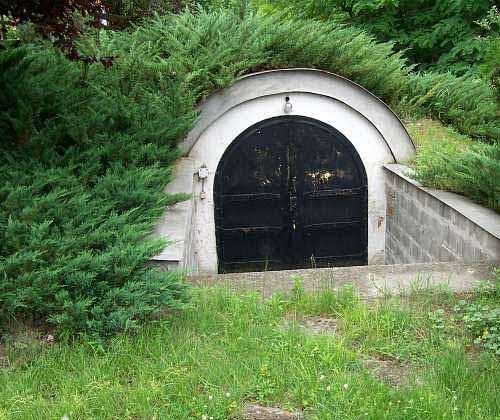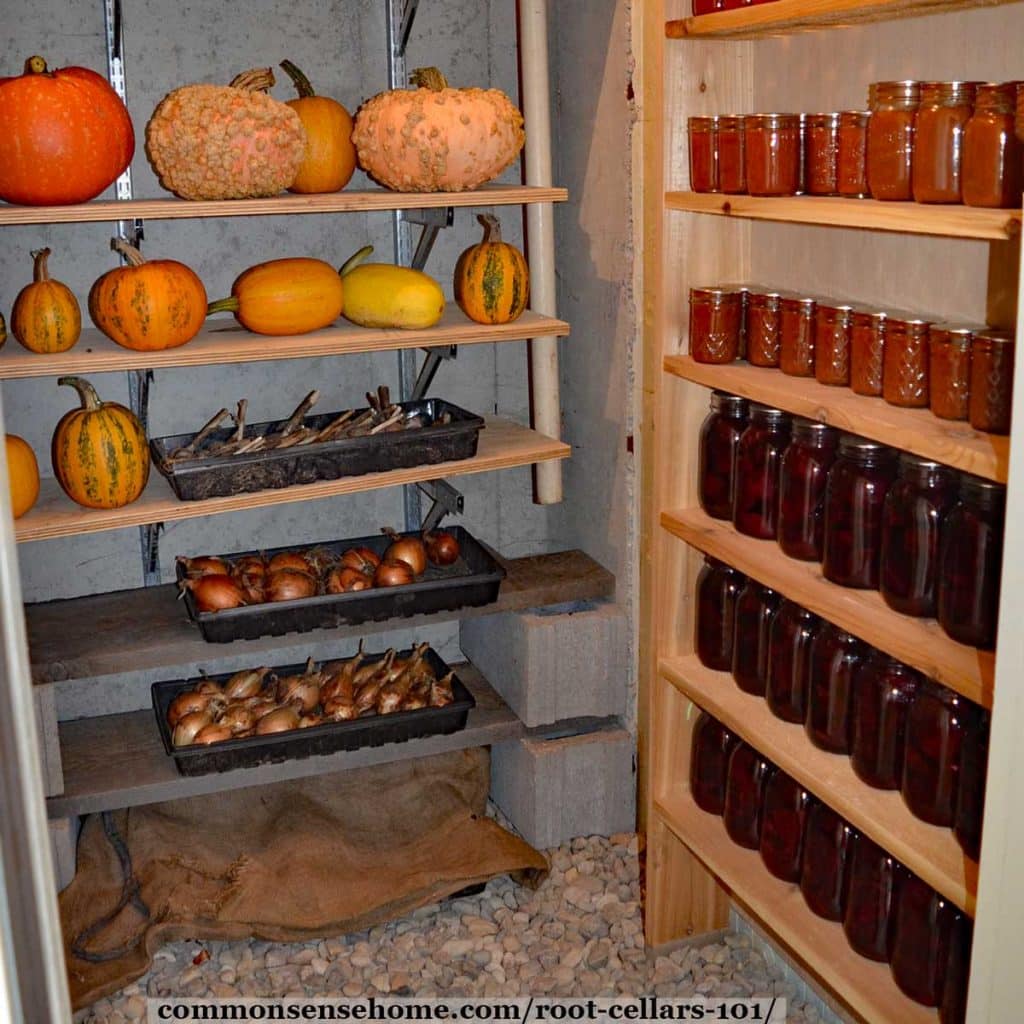

The effect can be compared to the way that cut flowers in a vase of water last much longer than cut flowers lying on a table: the flowers in the vase are not entirely dead yet and continue to respire. Although they may no longer qualify as living, the plant cells continue to respire in some impaired but nonzero way, resisting bacterial decomposition for a time. The ability of some vegetables and fruit to keep for months in favorable cellar conditions stems in part from the fact that they are not entirely inanimate even after picking. Items such as salad greens, fresh meat, and jam pies are kept in the root cellar early in the day to keep cool until they are needed for supper. Water, bread, butter, milk, and cream are sometimes stored in the root cellar. Apples can give off enough ethylene gas to hasten the overripening or spoilage of other crops stored nearby, although this effect is variable, and many farms successfully store vegetables without segregating their apples. Separate cellars are occasionally used for storing fruits, such as apples. A potato cellar is sometimes called a potato barn or potato house. Other food supplies placed in the root cellar during winter include beets, onions, jarred preserves and jams, salt meat, salt turbot, salt herring, winter squash, and cabbage. Vegetables stored in the root cellar primarily consist of mostly root vegetables (thus the name) - potatoes, turnips, and carrots. A secondary use for the root cellar is as a place to store wine, beer, or other homemade alcoholic beverages. Typically, a variety of vegetables is placed in the root cellar in the autumn after harvesting. Root cellars keep food from freezing during the winter and keep food cool during the summer to prevent the spoiling and rotting of the roots, for example, potatoes, onions, garlic, carrots, parsnips, etc. Many crops keep longest just above freezing (32–35 ☏ (0–2 ☌)) and at high humidity (90–95%), but the optimal temperature and humidity ranges vary by crop, and various crops keep well at temperatures further above near-freezing but below room temperature, which is usually 65–70 ☏ (18–21 ☌). Root cellars are for keeping food supplies at controlled temperatures and steady humidity. Two traditional sod-covered potato cellars in southeastern Idaho Thus, they are popular among diverse audiences, including gardeners, organic farmers, DIY fans, homesteaders, anyone seeking some emergency preparedness (most extensively, preppers), subsistence farmers, and enthusiasts of local food, slow food, heirloom plants, and traditional culture. Although present-day food distribution systems and refrigeration have rendered root cellars unnecessary for many people, they remain important for those who value self-sufficiency, whether by economic necessity or by choice and for personal satisfaction.

Root cellaring has been vitally important in various eras and places for winter food supply. Its name reflects the traditional focus on root crops stored in an underground cellar, which is still often true but the scope is wider, as a wide variety of foods can be stored for weeks to months, depending on the crop and conditions, and the structure may not always be underground. Interior of a large Wyoming root cellar with cropsĪ root cellar (American English), fruit cellar (Mid-Western American English) or earth cellar (British English) is a structure, usually underground or partially underground, used for storage of vegetables, fruits, nuts, or other foods.


 0 kommentar(er)
0 kommentar(er)
